So the first step is to take a cylinder in ZBrush, stretch it out a bit and then use the sliders from the Deformation palette to quickly give it some initial shape. For example, you can use the polish slider to soften the shape of the cylinder and then the smooth slider to keep the shape clean. After that, you can run a quick ZRemesher to keep a nice topology that is easier to control!
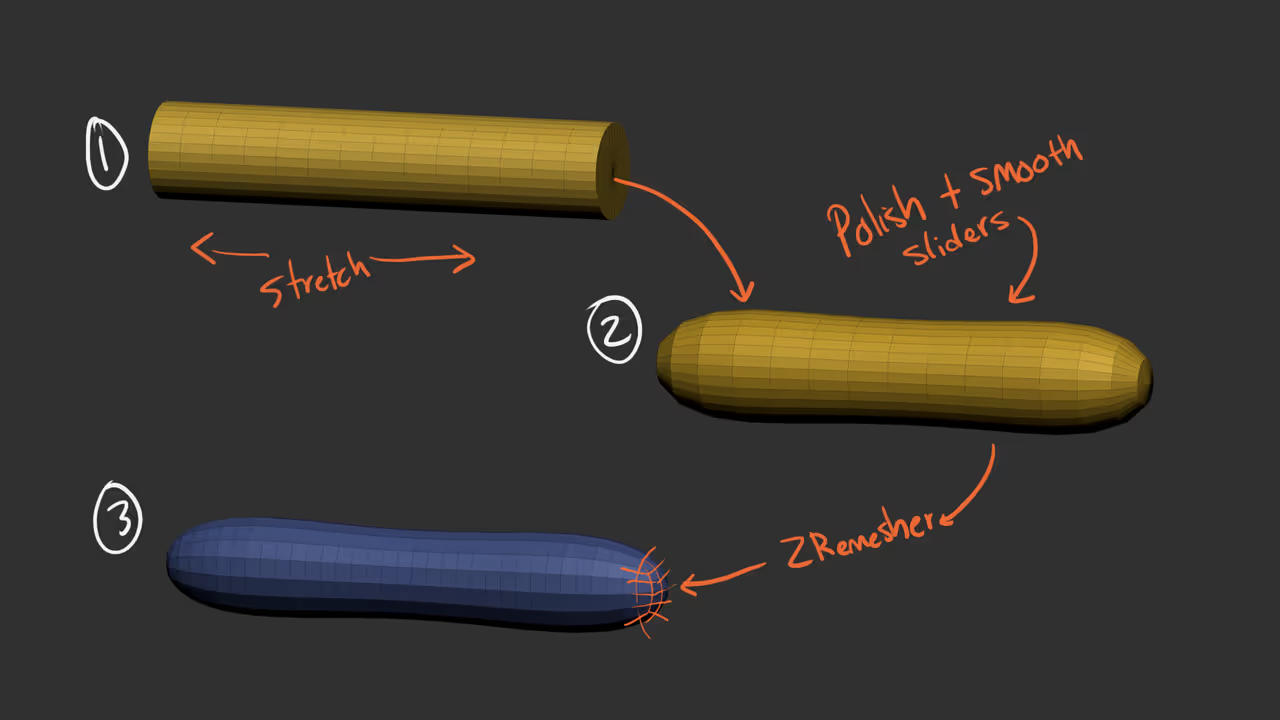
This next step can be skipped but I think it helps with this particular workflow. You can use the Gizmo 'Flatten deformer' (or use the clip brushes) to flatten the top of the cylinder like this:
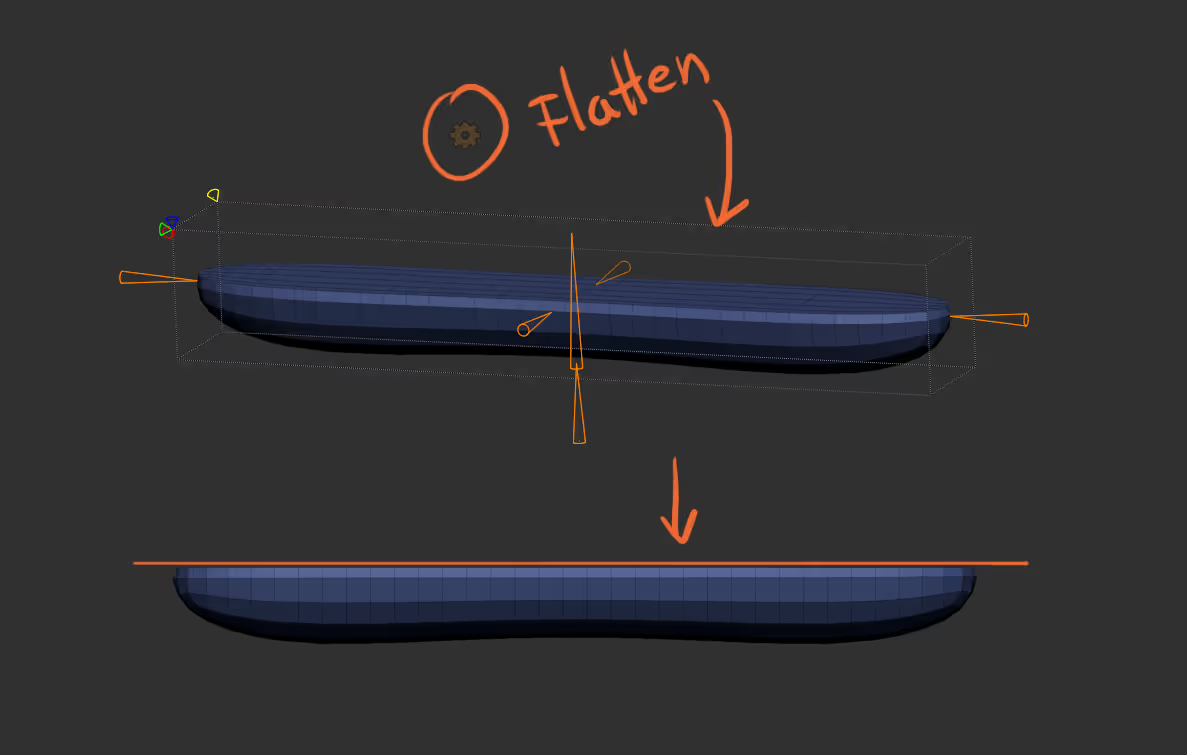
And once you have this basic ‘elongated half-pill’ shape, you can bring in the Gizmo 3D and start with the fun part:
- Take your gizmo and click on the ‘lock icon’ or hold ‘alt’ to reposition it at the end of the cylindrical shape.
- Take the focal shift slider from the Draw Palette (or the right-click pop-up window) and set it to something like 50.
- Changing the focal shift will change the influence of the gizmo base on its location… you can think about it as a soft deformed or proportional editing tool. Simply start rotating from a point and you’ll see the cylinder ‘curl’ a bit:
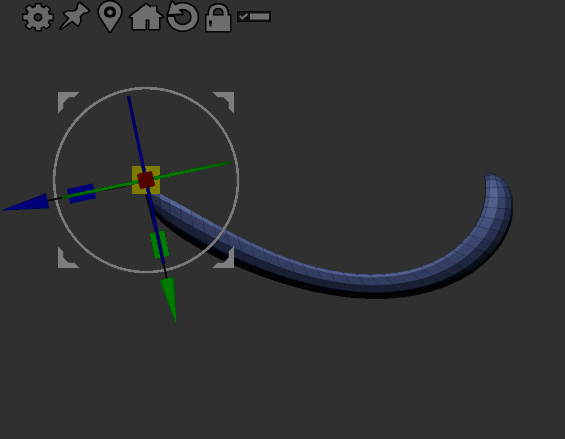
Don’t worry too much about things stretching or getting too thin, you can always inflate the shape to give it more thickness and then run another ZRemesher.
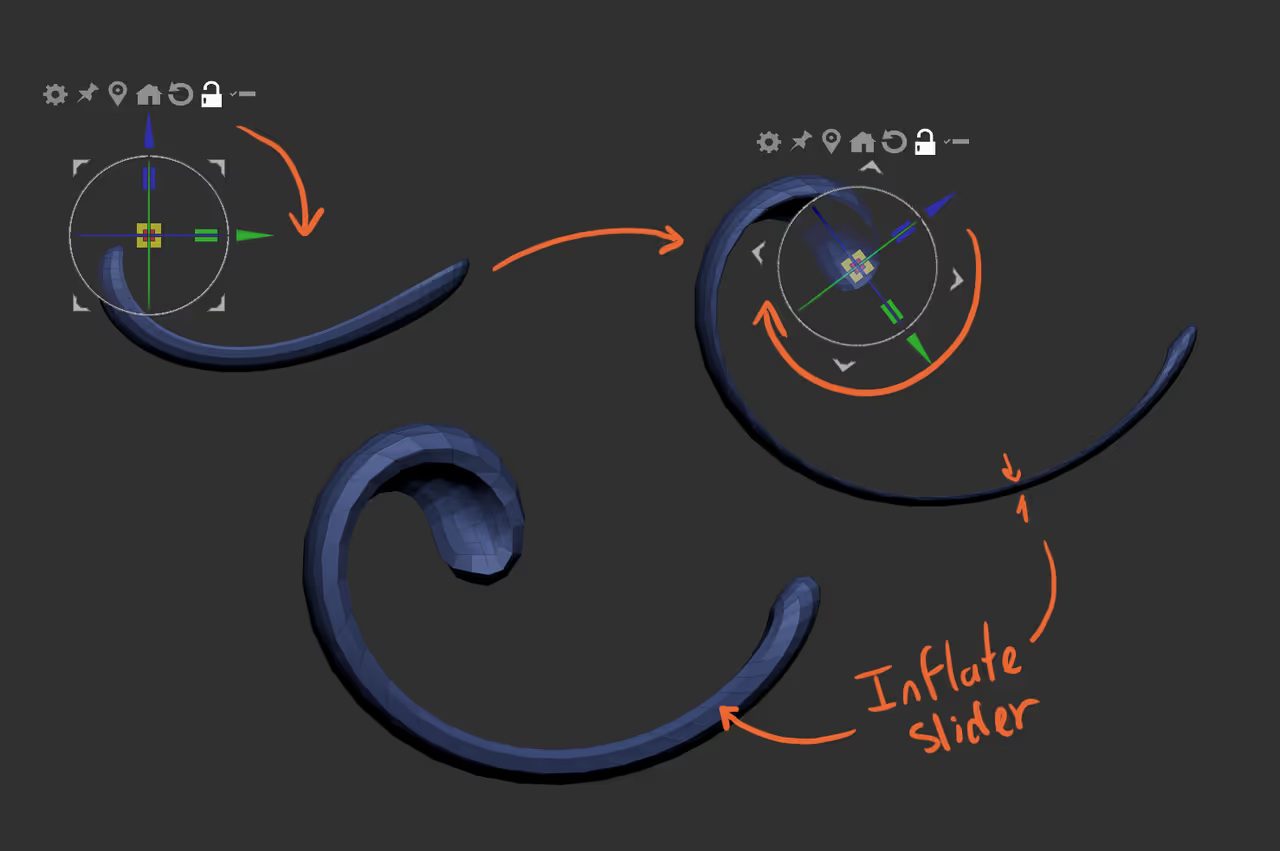
Also, keep in mind that the focal shift of the Gizmo is not only for rotation, you can also use scale, for instance, to add thickness on one end of the ‘curl’. You can also play with the value on the Focal Shift slider to refine the influence over the entire shape.
This part of making ‘curly’ shapes is quite fun and really simple with this technique, so go ahead and repeat the process with a couple more pieces and arrange them around to create your design.
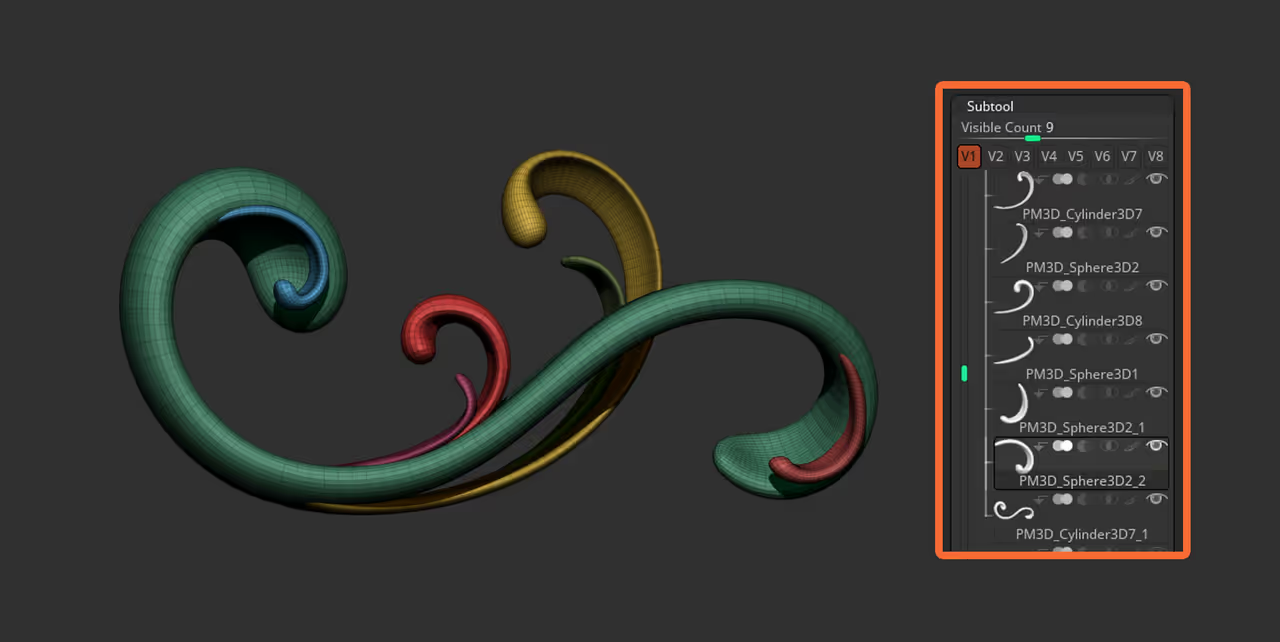
Once you have your base ornament ready, you can merge all the subtools and Dynamesh them together to refine the transition between the shapes. If you want to keep the clean base mesh, you can also put them into a folder, boolean the folder and then run a ZRemesher process.
The cool thing is that once you have a simple piece, you can start playing with scale and duplicating it to create something a lot more complex:
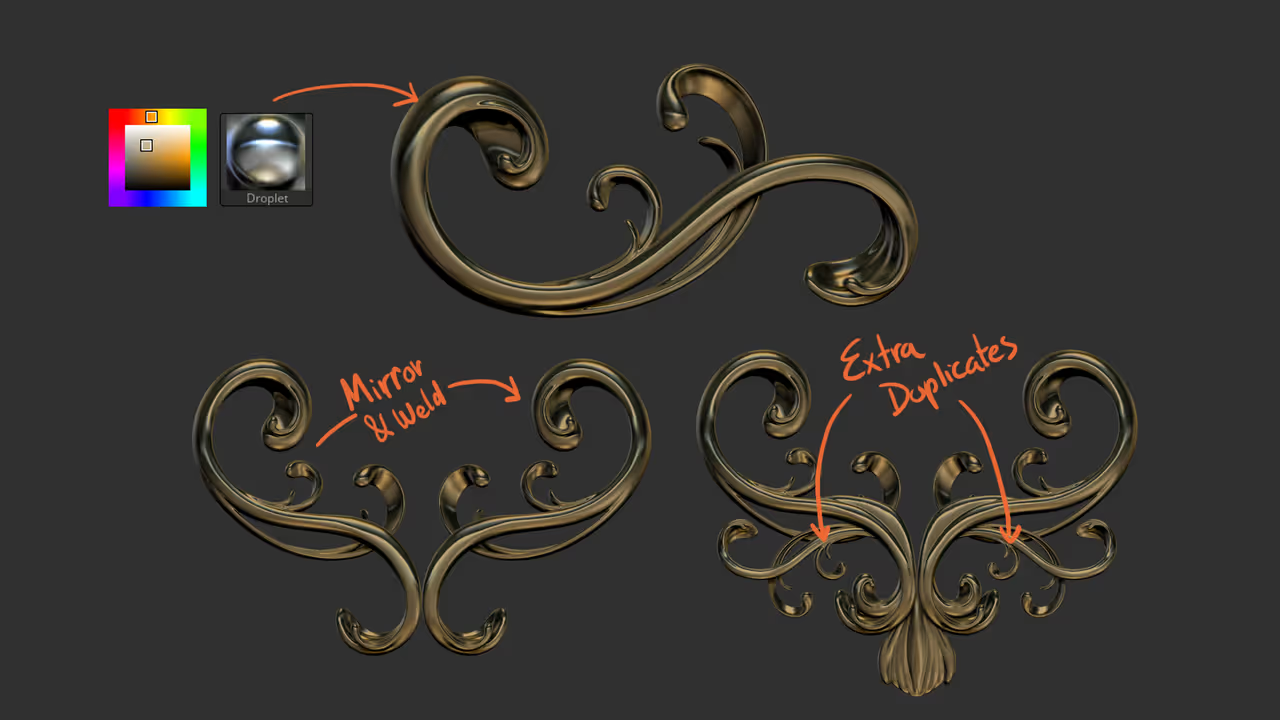
That’s about it for this technique. hope you find it useful!

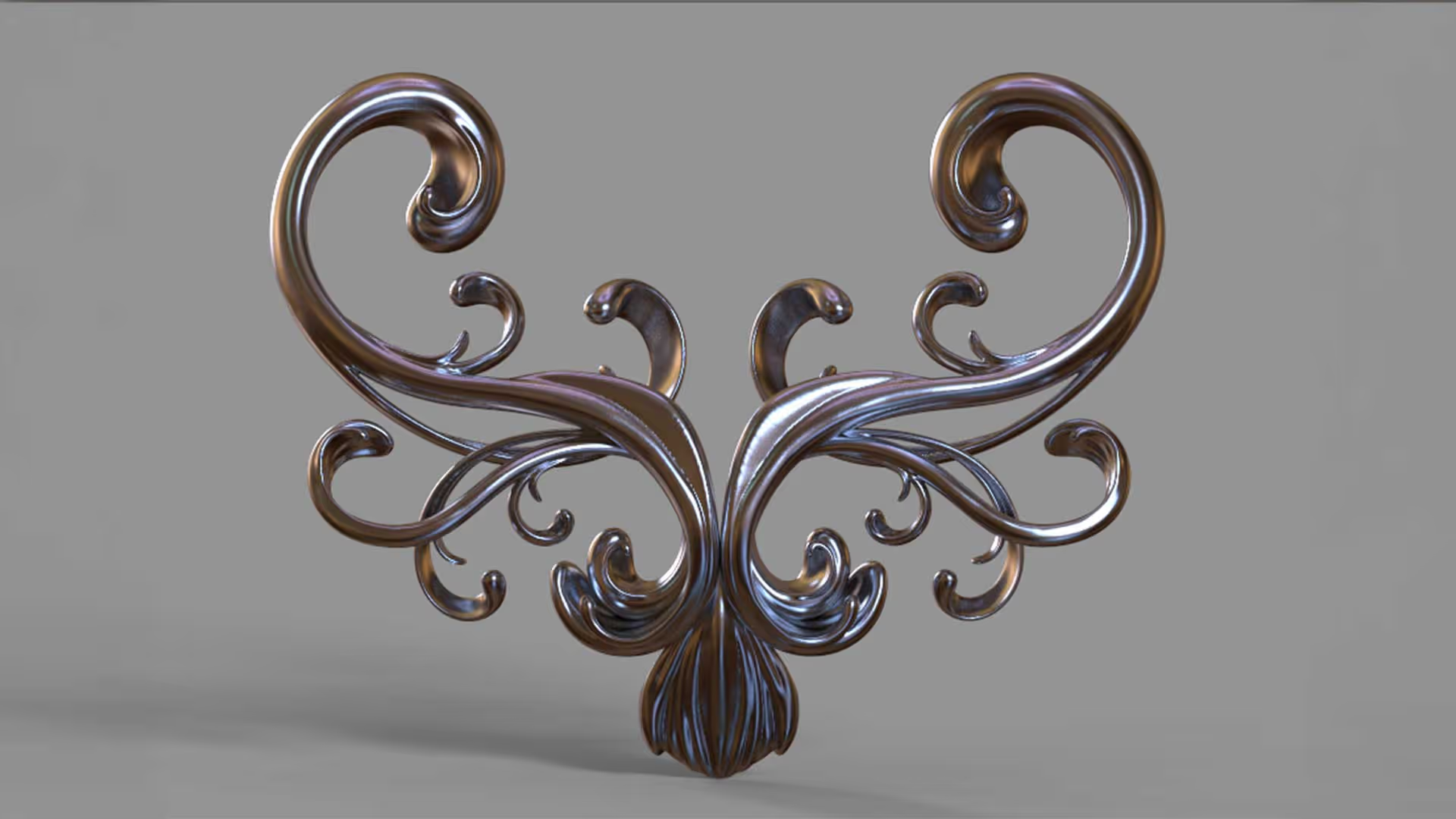






.jpg)